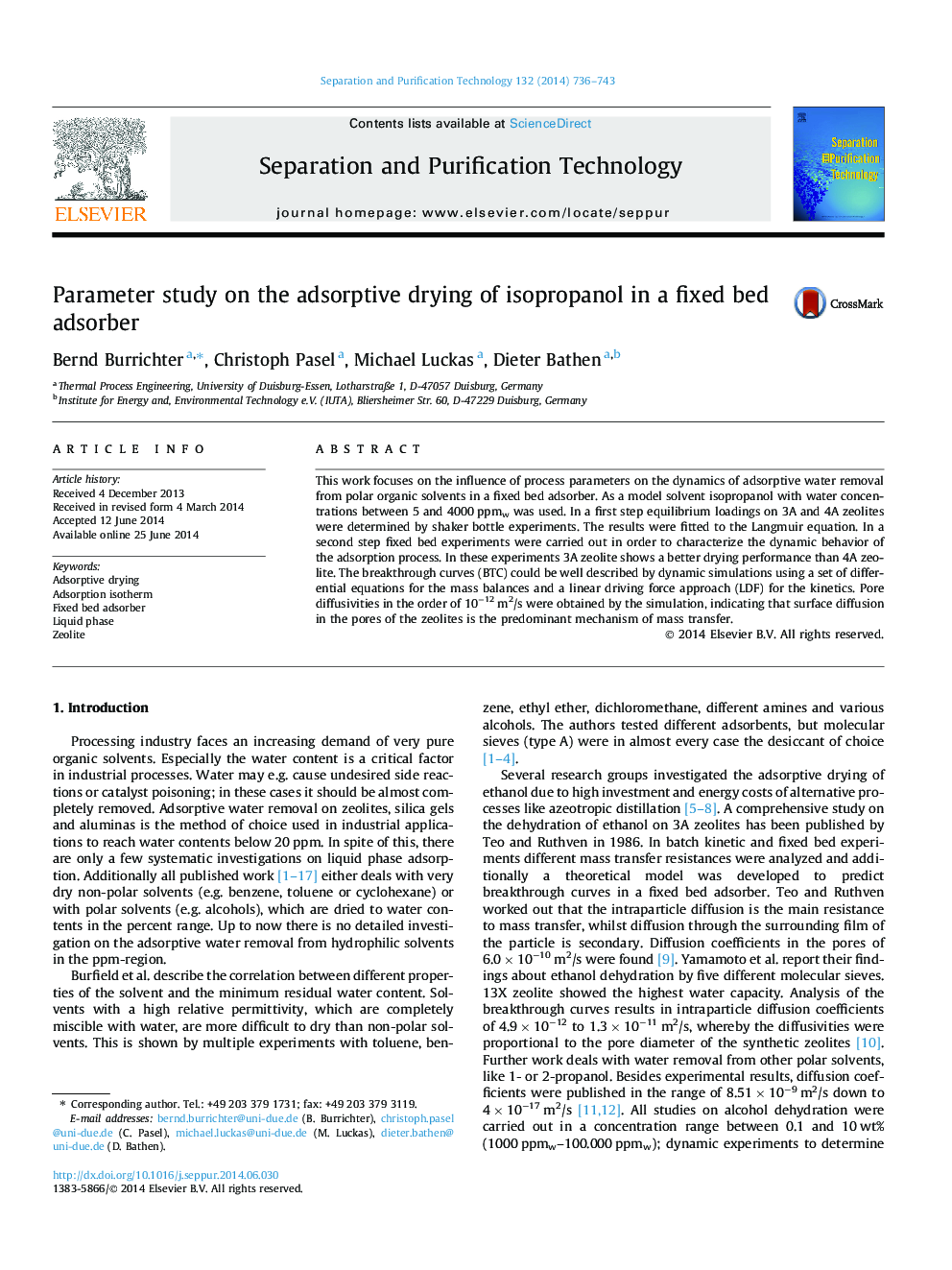| Article ID | Journal | Published Year | Pages | File Type |
|---|---|---|---|---|
| 641071 | Separation and Purification Technology | 2014 | 8 Pages |
•Adsorption isotherms and BTCs of water from isopropanol on zeolites were determined.•Dynamic simulations of the BTCs are in good agreement with the experimental data.•3A zeolite shows superior drying performance.•Surface diffusion was found as dominant mechanism of mass transfer.•Pore diffusivities in type A zeolites depend on adsorptive concentration.
This work focuses on the influence of process parameters on the dynamics of adsorptive water removal from polar organic solvents in a fixed bed adsorber. As a model solvent isopropanol with water concentrations between 5 and 4000 ppmw was used. In a first step equilibrium loadings on 3A and 4A zeolites were determined by shaker bottle experiments. The results were fitted to the Langmuir equation. In a second step fixed bed experiments were carried out in order to characterize the dynamic behavior of the adsorption process. In these experiments 3A zeolite shows a better drying performance than 4A zeolite. The breakthrough curves (BTC) could be well described by dynamic simulations using a set of differential equations for the mass balances and a linear driving force approach (LDF) for the kinetics. Pore diffusivities in the order of 10−12 m2/s were obtained by the simulation, indicating that surface diffusion in the pores of the zeolites is the predominant mechanism of mass transfer.
